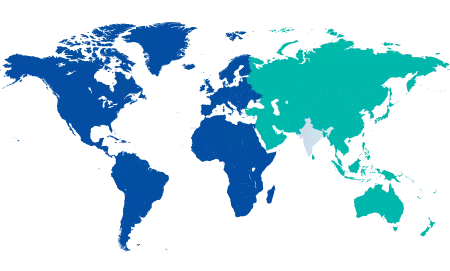-
Book Appointments & Health Checkup Packages
- Access Lab Reports
-
-
Book Appointments & Health Checkup Packages
-
Centre of
Excellence
Centre of Excellence
- Cancer Care/Oncology
- Cardiology
- Cardiothoracic Vascular Surgery
- Diabetes and Endocrinology
- Gastrointestinal Science
- GI Surgery
- Hemato Oncology
- Hematology
- Hepatobiliary Surgery
- ICU and Critical Care
- Medical Gastro
- Medical Oncology
- Nephrology
- Neurology
- Neurosurgery
- Orthopaedics
- Pulmonology (Respiratory and Sleep Medicine)
- Renal Sciences
- Surgical Gastro
- Surgical Oncology
- Urology
- Woman and Child Care Centre
Other Specialities
- Accident and Emergency Care
- Andrology
- Anesthesiology
- Dental Medicine
- Dermatology
- Ear Nose Throat
- General Medicine
- General Surgery
- Internal Medicine
- Kidney Transplant
- Laboratory Medicine
- Laparoscopic Surgery
- Microbiology
- Minimal Access Surgery
- Neonatology & NICU
- Nutrition And Dietetics
- Obstetrics and Gynaecology
- Ophthalmology
- Oral Maxillo Facial Surgery
- Organ Transplant
- Paediatric And Child Care
- Paediatric Cancer Care
- Paediatric Cardiology
- Paediatric Intensive Care Unit
- Paediatric Urology
- Pain Medicine
- Parkinson Disease and Movement Disorder
- Pathology
- Physiotherapy
- Plastic And Cosmetic Surgery
- Radiology
- Rheumatology
- Transfusion Medicine
- Vascular and Endovascular Surgery
- Doctors
- Ranchi
- International Patients



Clinics








- Self Registration
- In-Patient Deposit
- Mars - Ambulance
- Corporate & PSU
- Insurance Helpdesk
- Awards And Achievements
- Careers
- Contact Us

Tracheostomy
Tracheostomy Treatment in Ranchi
A Tracheostomy is a medical procedure that creates an opening in the neck into the windpipe (trachea) to help air and oxygen reach the lungs. A breathing tube is inserted into this opening, allowing the patient to breathe more easily.
At Manipal Hospital, Tracheostomy treatment in Ranchi is performed by experienced critical care specialists and ENT surgeons. This is either done as an emergency intervention or as a planned procedure for patients with chronic or obstructive airway conditions.
Why is Tracheostomy done?
A Tracheostomy procedure in Ranchi may be recommended in the following situations:
-
Prolonged mechanical ventilation (usually more than 7-10 days)
-
Airway obstruction due to trauma, tumour, or congenital abnormalities.
-
Neurological conditions affecting breathing or swallowing.
-
Head and neck surgeries that require airway access.
-
Severe infections or burns causing airway swelling.
Tracheostomy treatment in Ranchi is part of a comprehensive critical care plan. The team carefully assesses the airway, ventilation needs, and overall health before proceeding.
What to expect before a Tracheostomy?
Before the Tracheostomy procedure in Ranchi, patients undergo a thorough evaluation that includes:
-
Imaging studies, like CT scans or ultrasound, to assess airway anatomy.
-
Blood tests to evaluate clotting and overall fitness for surgery.
-
Informed consent and pre-procedure counselling with the care team.
What to expect during the Tracheostomy procedure?
Tracheostomy treatment in Ranchi may involve either Surgical Tracheostomy or Percutaneous Tracheostomy, both performed with precision. The choice of technique depends on the patient’s condition, anatomy, and the urgency of the procedure.
-
Surgical Tracheostomy: This is performed in an operating room under sterile conditions. A small horizontal incision is made in the lower front part of the neck to expose the trachea (windpipe). An opening (stoma) is created in the trachea, through which a tracheostomy tube is inserted to maintain an airway.
-
Percutaneous Tracheostomy: Typically performed at the bedside in the ICU under local anaesthesia and sedation. A needle is inserted into the trachea, and progressively larger dilators are used to create an opening for the tube. The procedure is usually guided by bronchoscopy or ultrasound to ensure correct placement and minimise complications.
What to expect after a Tracheostomy?
After the Tracheostomy procedure in Ranchi, patients are monitored closely in the hospital for several days. The care team provides education and support on:
-
Monitoring for bleeding, infection, or tube displacement.
-
Using humidified oxygen and suctioning techniques.
-
Regular cleaning and changing of the tracheostomy tube.
-
Initiating speech and swallowing therapy if required.
What are the benefits and risks of a Tracheostomy?
Benefits:
-
Improves breathing in patients with blocked or compromised upper airways.
-
Allows for long-term ventilator support with greater comfort than intubation.
-
Facilitates weaning from a ventilator.
-
Makes oral and facial care easier.
Risks:
Some complications that can occur are:
-
Bleeding or infection.
-
Narrowing (stenosis) or scarring of the trachea.
-
Accidental tube displacement.
-
Air leakage into the chest (pneumothorax)
-
Long-term complications such as tracheo-oesophageal fistula.
At Manipal Hospital, the risks associated with the Tracheostomy procedure in Ranchi are minimised through skilled technique, sterile protocols, and continuous monitoring. The critical care unit is able to handle different kinds of advanced airway issues and ensure safe recovery.
FAQ's
A Tracheostomy is needed for patients who require long-term ventilator support, have upper airway obstruction, or need airway protection due to neurological conditions. It is also used during certain head and neck surgeries.
The Tracheostomy procedure in Ranchi itself is painless, as it is performed under anaesthesia. Some discomfort or soreness may occur around the site after surgery, but it is usually mild and can be managed with medication.
Recovery depends on whether the Tracheostomy is temporary or permanent. Temporary tracheostomies generally heal within 7–10 days. Ongoing care is required for permanent tracheostomies, and some patients may need respiratory or speech therapy during recovery.
The Tracheostomy procedure can affect speech initially. The tube redirects airflow away from the vocal cords, making it hard to produce sound. Speech-language therapists at Manipal Hospital, EM Bypass, Kolkata, can help patients speak again using techniques such as a speaking valve. With practice and support, many patients can speak well with the tube in place.
Not all tracheostomies are permanent. If the underlying condition improves and normal breathing is restored, the tube can often be removed. In cases where the airway problem is irreversible, a permanent Tracheostomy may be required.
For more information on Tracheostomy treatment in Ranchi, patients can call the number below or visit the official Manipal Hospitals website.
Website: https://www.manipalhospitals.com/ranchi/
Phone Number: 06516621000
Home Ranchi Specialities Icu-and-critical-care Tracheostomy-2



You’re on Our Indian Website
Visit the Global site for International patient services










